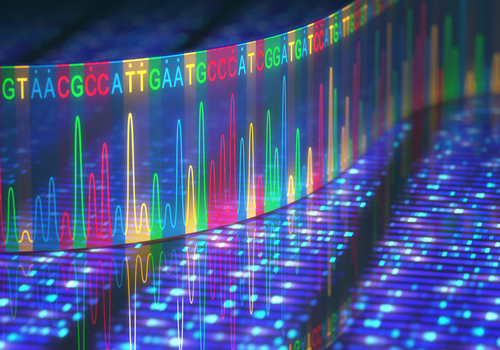New KIF1A Gene Mutation Linked to Rett, Ends One Girl’s 15-year Diagnostic Journey

Researchers have identified a new mutation in the KIF1A gene in a girl in Australia that is associated with Rett syndrome, ending her 15-year diagnostic journey.
Two new other KIF1A mutations also were found in two patients showing a severe neurodevelopmental disorder with some Rett-like features. These mutations affected the transport of molecules in nerve cells, similar to the effects of MECP2 gene mutations, the main cause of Rett syndrome.
Based on these findings, the researchers proposed that mutations in the KIF1A gene be screened in Rett patients without MECP2 mutations.
The cases were reported in the study “Expansion of the phenotypic spectrum of de novo missense variants in kinesin family member 1A (KIF1A),” published in the journal Human Mutation.
Rett syndrome is primarily caused by mutations in the MECP2 gene, but variants in other genes, such as CDKL5, have been linked to atypical types of the disease, in which symptoms do not meet all the diagnostic criteria.
Most Rett cases are caused by “de novo” mutations, which are not inherited but rather occur during embryonic development.
MECP2 and CDKL5 are both involved in the regulation of microtubules, hollow tubular structures that not only provide structure to cells, but also form highways to transport molecules and organelles inside cells.
In nerve cells, microtubules are particularly involved in the transport of vesicles filled with neurotransmitters — chemical messengers used in nerve cell communication — down nerve cell fibers, to be released as signals to other nerve cells.
Mutations in both MECP2 and CDKL5 have been associated with impaired microtubule dynamics and intracellular transport in nerve cells.
However, “due to the considerable overlap of clinical symptoms of Rett patients with other neurodevelopmental disorders, it can be challenging to establish a precise genetic diagnosis,” John Christodoulou, MD, the study’s senior author and the director of the genetics research theme at Murdoch Children’s Research Institute (MCRI), in Australia, said in a press release.
This diagnostic challenge is especially true for those lacking MECP2 mutations, the researchers said.
“However, recent advances in next‐generation sequencing have allowed us to identify new mutations in a growing list of genes known to cause intellectual disability, severe epilepsy and/or autistic behaviors where individuals have similarities to Rett syndrome, therefore providing a definitive genetic diagnosis for patients and closure for affected families,” Christodoulou added.
Now, he and his colleagues in Australia, Italy, Denmark, and the U.S. described the cases of four patients. One, a girl who showed classic Rett syndrome features and was followed at MCRI, underwent her first magnetic resonance imaging (MRI) scan at age 2. The three other patients had severe neurodevelopmental disorders with Rett-like features, all associated with de novo KIF1A mutations.
Notably, KIF1A mutations have been associated with “a broad spectrum of neurological disorders, broadly termed KIF1A-associated neurological disorders (KAND), in which the severity of clinical symptoms largely depends upon the variation introduced and its location in KIF1A,” the scientists wrote.
The girl with classic Rett features had delayed development, severe intellectual disability, and a history of seizures. Consistent with KAND features, she also had progressive leg muscle stiffening or tightening, and mild eye damage. However, in contrast to KAND patients, she showed normal brain MRI scans at age 12.
Notably, a recent study reported a similar case of a female with classic Rett carrying a de novo KIF1A mutation and showing a normal brain MRI.
Here, the girl was found to carry a previously unknown de novo KIF1A mutation, referred to as c.744C>A, or p.Asp248Glu. It resulted in likely disease-causative changes in the motor domain of the KIF1A protein, which is known to bind to microtubules.
Further analyses in cells grown in the lab showed that the mutation lowered KIF1A’s ability to move through microtubules, likely impairing molecule transport.
“We used a range of testing methods to show that the girl had a mutation which disrupted her KIF1A gene that subsequently affected the function of KIF1A [protein] in the brain,” said Simranpreet Kaur, the study’s lead author and a researcher at MCRI.
She added that these findings ended an arduous diagnostic journey of 15 years for the girl.
The other three patients, showing both KAND- and Rett-like features, also carried mutations affecting KIF1A’s motor domain. Two of these mutations were previously unknown; further analyses classified them as likely disease-causative and showed they impaired KIF1A’s binding to, or movement through, microtubules.
“This suggests that KIF1A defects contributed towards the development of features overlapping with Rett syndrome,” Kaur said, adding that the study “will lead to more diagnoses by expanding the mutation pool further, finding new KIF1A gene mistakes that cause KAND and related disorders.”
Interestingly, both MECP2 and KIF1A are associated with brain-derived neurotrophic factor, a key protein for nerve cells’ survival, development, and function, the researchers said. This may explain their overlap in causing Rett syndrome.
Based on their findings, the team recommended that genetic testing for KIF1A should be considered in Rett patients lacking MECP2 mutation.






